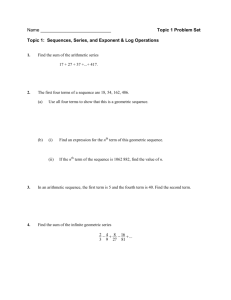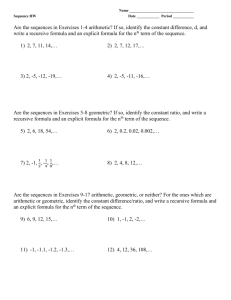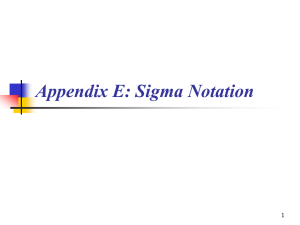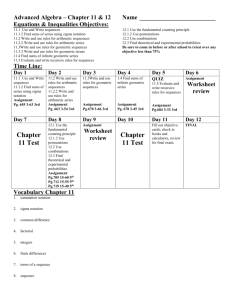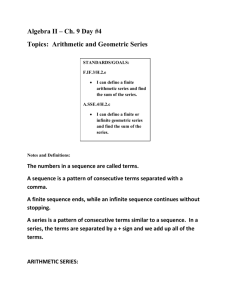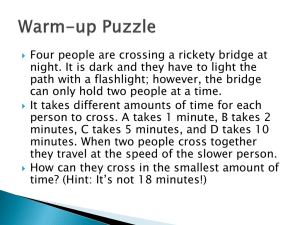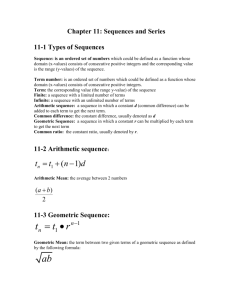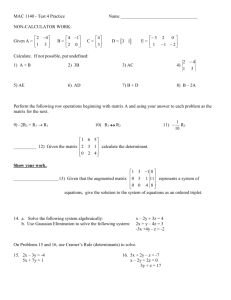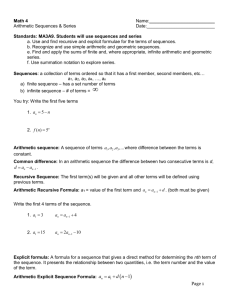VOCABULARY AND FORMULAS FOR SEQUENCES
advertisement
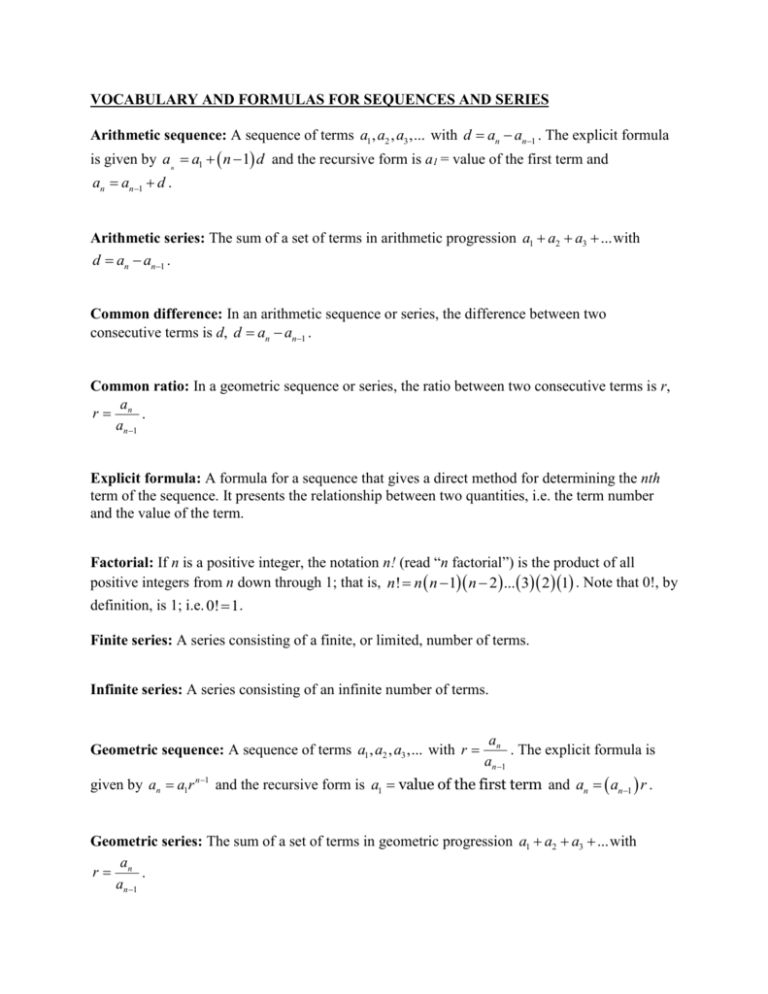
VOCABULARY AND FORMULAS FOR SEQUENCES AND SERIES Arithmetic sequence: A sequence of terms a1 , a2 , a3 ,... with d an an1 . The explicit formula is given by an a1 n 1 d and the recursive form is a1 = value of the first term and an an 1 d . Arithmetic series: The sum of a set of terms in arithmetic progression a1 a2 a3 ... with d an an1 . Common difference: In an arithmetic sequence or series, the difference between two consecutive terms is d, d an an1 . Common ratio: In a geometric sequence or series, the ratio between two consecutive terms is r, a r n . an 1 Explicit formula: A formula for a sequence that gives a direct method for determining the nth term of the sequence. It presents the relationship between two quantities, i.e. the term number and the value of the term. Factorial: If n is a positive integer, the notation n! (read “n factorial”) is the product of all positive integers from n down through 1; that is, n! n n 1 n 2 ... 3 21 . Note that 0!, by definition, is 1; i.e. 0! 1. Finite series: A series consisting of a finite, or limited, number of terms. Infinite series: A series consisting of an infinite number of terms. Geometric sequence: A sequence of terms a1 , a2 , a3 ,... with r an . The explicit formula is an 1 given by an a1r n 1 and the recursive form is a1 value of the first term and an an1 r . Geometric series: The sum of a set of terms in geometric progression a1 a2 a3 ... with a r n . an 1 Limit of a sequence: The long-run value that the terms of a convergent sequence approach. Partial sum: The sum of a finite number of terms of an infinite series. Recursive formula: Formula for determining the terms of a sequence. In this type of formula, each term is dependent on the term or terms immediately before the term of interest. The recursive formula must specify at least one term preceding the general term. Sequence: A sequence is an ordered list of numbers. n Summation or sigma notation: a , where i is the index of summation, n is the upper limit of i 1 i summation, and 1 is the lower limit of summation. This expression gives the partial sum, the sum n of the first n terms of a sequence. More generally, we can write a , where k is the starting ik i value. Sum of a finite arithmetic series: The sum, Sn, of the first n terms of an arithmetic sequence is n a1 an given by Sn , where a1 = value of the first term and an = value of the last term in the 2 sequence. Sum of a finite geometric series: The sum, Sn, of the first n terms of a geometric sequence is n a1 an r a1 1 r given by Sn , where a1 is the first term and r is the common ratio (r 1). 1 r 1 r Sum of an infinite geometric series: The general formula for the sum S of an infinite geometric a series a1 a2 a3 ... with common ratio r where r 1 is S 1 . If an infinite geometric 1 r series has a sum, i.e. if r 1 , then the series is called a convergent geometric series. All other geometric (and arithmetic) series are divergent. Term of a sequence: Each number in a sequence is a term of the sequence. The first term is generally noted as a1, the second as a2, …, the nth term is noted as an. an is also referred to as the general term of a sequence.
